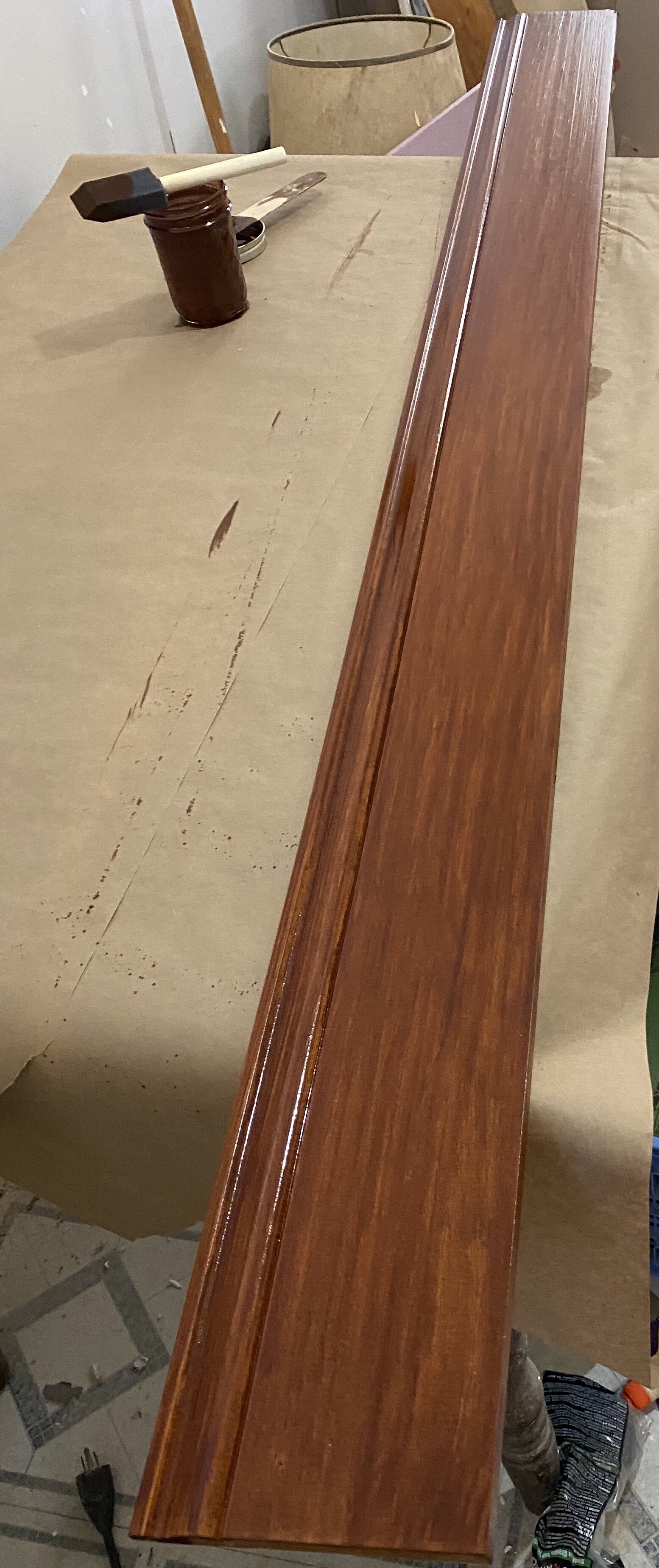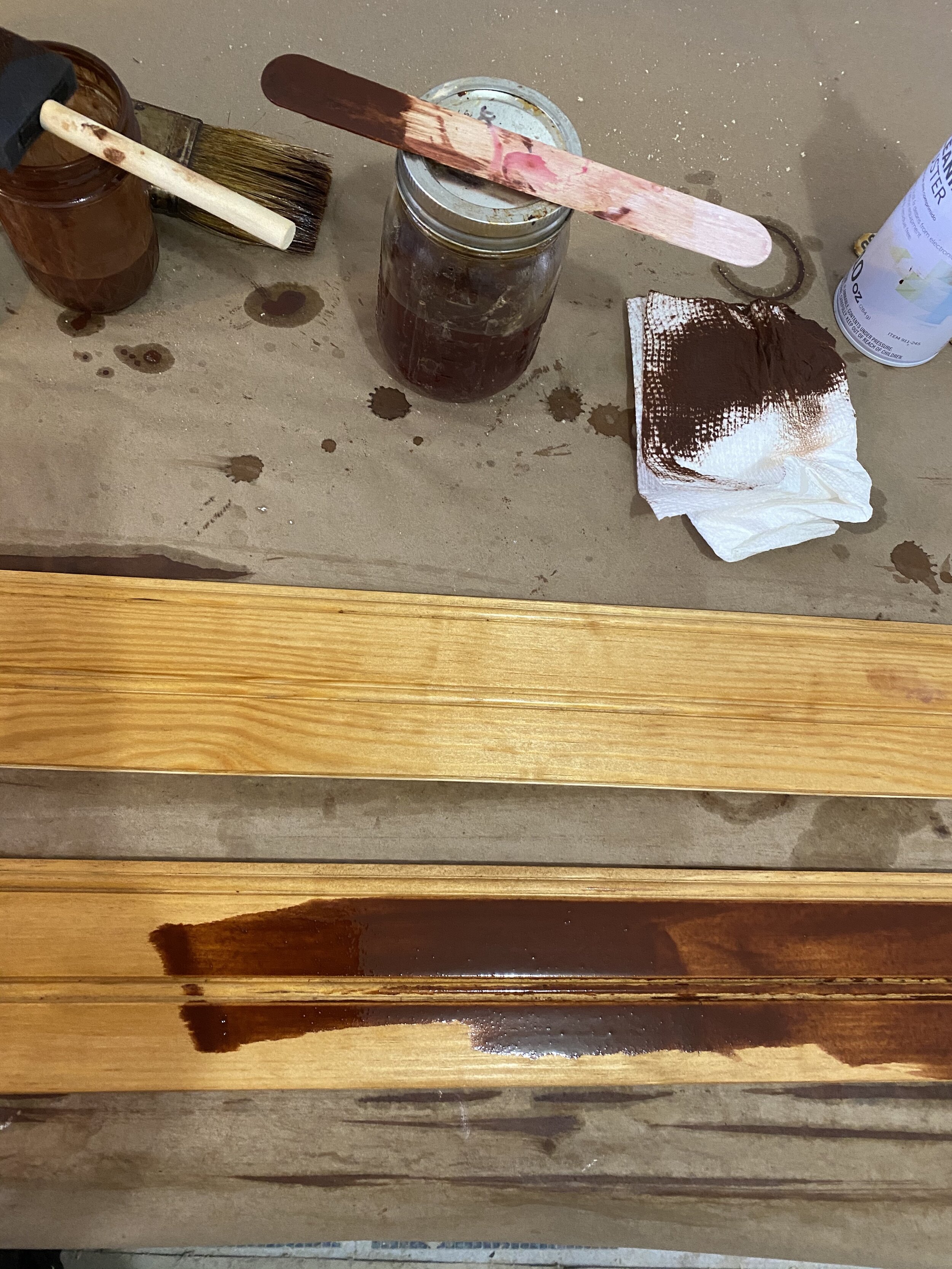Legs and Boards
While I’m in flux with the floor, I focus this weekend on starting to stain the large amount of beadboard pieces. During the week I didn’t have good luck locating a contractor to take a look at the floor. It seems like the regular contractor I was working with moved out of the area because he stopped responding to my texts and I saw it mentioned on Facebook that he left New Jersey. I was able to find a contractor to take a look at the bathroom and he said the floor was in good shape and that the imperfections could be fixed with self leveling compound. I decide to move forward with that, but that work will be taken care of after I leave.
So on to working on the beadboard to get it stained before installation. I’ve been testing some wood recipes after reading a bunch of books, working on the cottage, and finishing the built-in in the attic. For this round I’m going to go with everything mixed by me with no Minwax or off-the-shelf products.
Baseboard after dying.
After applying the stain.
Beadboard after applying a mix of BLO and turpentine.
The formula I come up with is first wiping down the wood with a 60-40 mixture of turpentine and boiled linseed oil. I like the look of linseed oil to bring out the grain and I’m also hoping this will serve as a stain conditioner for the dye used later. After that dries, I raise the grain by wiping down with a wet cloth. When the water dries I sand down with 150 then 220 sandpaper. I then apply an amber shellac wash of about 1/2 pound cut. This is another attempt to condition the wood before dye. After the shellac dries, I apply water-based dye. When the dye dries, another coat of amber shellac, this time at 1 pound cut. When this shellac dries the next coat is a homemade wood stain. This is 1/2 tsp of Indian Red oil paint dissolved in 4 oz of turpentine. Then 4 tsps of burnt umber linseed oil paint from Earth + Flax with 4 oz of boiled linseed oil and a few drops of Japan Dryer. The stain is left on for about 10 minutes and then wiped off.
Letting the stain sit for 10 minutes.
Applying the stain.
Matching the new with the old.
These steps give a pretty close match to the existing beadboard in the house. After I get everything stained, I’m thinking of going with another shellac coat and then 3 coats of Waterlox varnish. Normally I’d stick with just shellac, but I think for the bathroom I want something a little more durable. Shellac can be durable, but it doesn’t deal with water very well (if you ever had some old shellacked furniture, you could see white marks if the shellac came in contact with water). Most modern varnishes are polyurethanes, but Waterlox is a tung oil based varnish from a 1910 recipe.
While I jump between woodwork, I also finish up the tub legs. I give them a few more baths of the rust remover and scrape off pretty much all of the rust and white paint. After that is done, I put on a coat of iron oxide paint. This paint is supposed to retard rust and then I’ll put a top coat on of whatever color I pick for the tub legs.
Rust stripped from leg.
Iron oxide paint.















